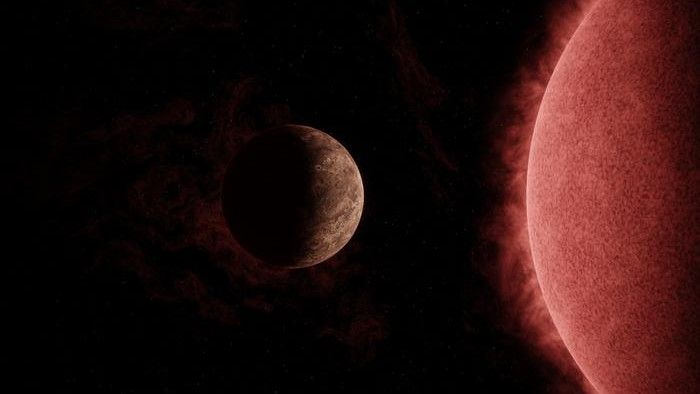Science
Related: About this forumEarth-size planet found orbiting nearby star that will outlive the sun by 100 billion years
News
By Sharmila Kuthunur published 2 days ag
An Earth-size planet discovered around a nearby star offers astronomers their first chance for exoplanetary geology.

a rocky planet orbiting a hot red star in space
Artist's view of exoplanet SPECULOOS-3 b orbiting its star. The planet is as big as the Earth, while its star is slightly larger than Jupiter, but much more massive (Image credit: Lionel Garcia)
Astronomers have discovered an Earth-size planet that is showered with so much radiation, its atmosphere eroded away long ago, leaving it bare. Life as we know it can't exist on this blistering world, but astronomers are interested in it for another reason: For the first time, they may be able to study the geology of a planet outside our solar system.
The newfound exoplanet, named SPECULOOS-3 b, is a rocky planet roughly 55 light-years from Earth. It zips around its host star every 17 hours, but days and nights on the planet are endless. Astronomers suspect the planet is tidally locked to its star, like the moon is to Earth. A single dayside always faces the star, while the nightside is locked in eternal darkness.
Telescope observations show that frequent radiation from the exoplanet's star, a 7 billion-year-old red dwarf about the size of Jupiter, roasts the planet to Venus-like temperatures. So any atmosphere the planet may Mhave had easily escaped into space long ago and left behind an airless, sizzling ball of rock, astronomers reported in the new study, published May 15 in the journal Nature Astronomy.
"Life as we know it could not emerge on the surface of the planet — atmosphere or not — because it could not sustain large amounts of water in liquid form," study lead author Michaël Gillon, an astronomer at the University of Liège in Belgium, told Live Science. "It is a bare rock planet like Mercury."
More:
https://www.livescience.com/space/exoplanets/earth-size-planet-found-orbiting-nearby-star-that-will-outlive-the-sun-by-100-billion-years
BlueWaveNeverEnd
(10,847 posts)True Dough
(23,780 posts)Since they're "Speed of Light Movers," I should be settled in on that new planet by 2,079. I'm so excited! Just not sure if I should keep my bicycle or sell it. Not sure about the gravitational pull there...
BWdem4life
(2,588 posts)BlueWaveNeverEnd
(10,847 posts)Mike Nelson
(10,673 posts)... I believe the headline stated this planet "will outlive [our] sun by 100 billion years." I would have expected a yellow sun to last much longer than a red dwarf. So... I started reading up on stars. I thought white-yellow-red was a "lifespan" of sorts... turns out stars are more complicated than I thought! This planet's orbit must be close to its sun... there are likely billions more Earth-like planets out there... some with comfortable distances from their home star.
![]()